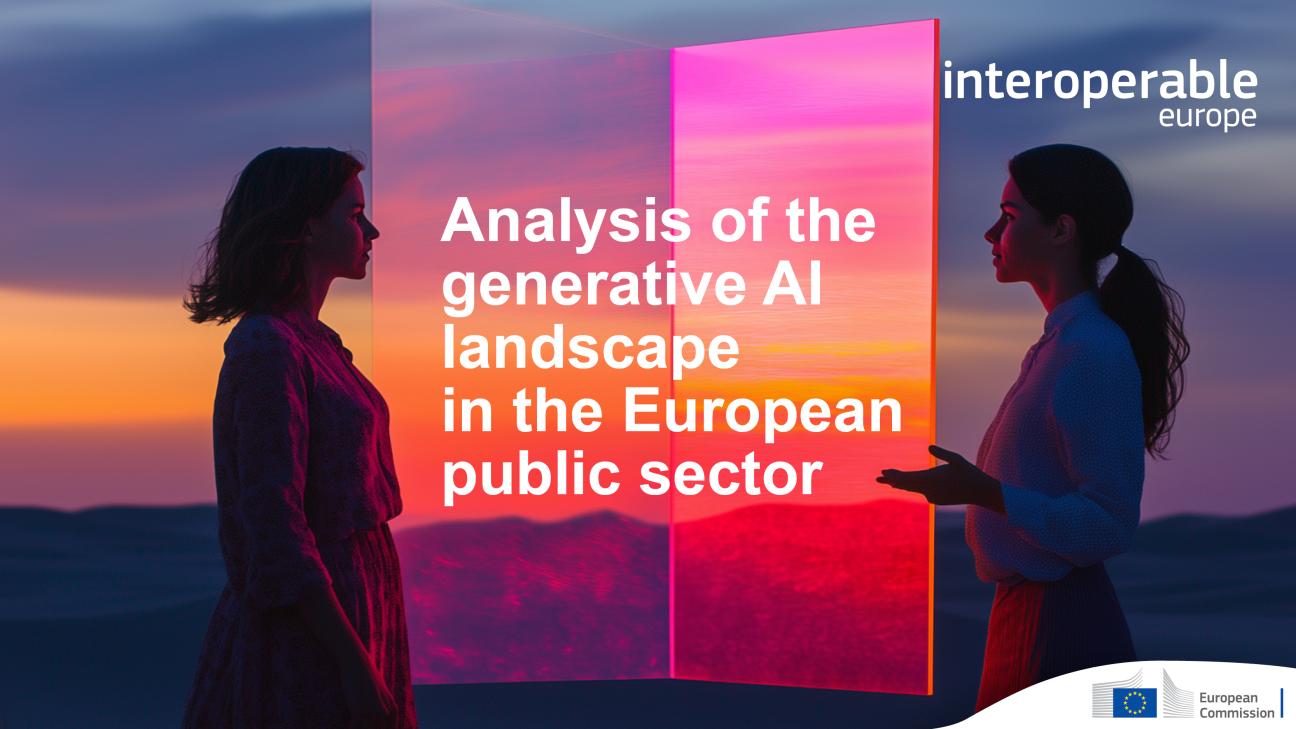New PSTW report shows evolution of generative AI in European public administrations
more news
The European Commission’s Public Sector Tech Watch (PSTW) published a new report entitled Analysis of the generative AI landscape in the European public sector. The report provides the first perspective, at EU level, on the governance, implementation, and trials of generative AI (GenAI) technologies across public administrations in Europe.
The PSTW, established in 2023, actively monitors, and analyses the use of emerging technologies - including AI and blockchain - in public sector innovation. Managed by the Interoperable Europe Unit at DIGIT and the Joint Research Centre (JRC), the PSTW’s latest report delves into the increasing momentum of generative AI from guidelines and governance to implementation at ground level.
Emerging technology but with remaining challenges
Generative AI tools, from chatbots to legislative drafting tools, are increasingly being piloted in European administrations. The report notes how GenAI enables governments to provide personalised services, automate and enhance administrative processes and improve government decision-making. However, the mass usage of such tools presents challenges such as added human oversights, safeguarding citizen data, and various governance, ethical and technical issues.
The report examines 33 GenAI-related policy documents across 17 EU Member States, EU institutions and regions and identifies a clear priority on ensuring accountability, transparency, and personal data privacy as well as promoting innovation and public-private collaboration.
Growing adoption
The PSTW report identified 61 GenAI use cases from twenty countries and EU institutions, and over half of them were new launches from 2024. Most of the use cases are still being piloted or developed, demonstrating early but growing interest. National administrations are leading the adoption, with use cases spanning general public services, public safety, tourism, and legislative support.
Interview insights from cities like Helsinki and Dublin, as well as institutions like the University of Bologna and the Catalan Government, reveal how public organisations are working with tech providers, universities, and internal IT teams to co-develop GenAI tools. The most common priorities that emerged were around language adaptation, interoperability, and building inclusive and explainable AI.
National models for digital sovereignty
The report identifies a new trend of national large language models (LLMs) being created and trained using local data and building processes in local languages. Countries including Bulgaria (BgGPT), Sweden (GPT-SW3), Finland (FinGPT), and the Netherlands (GPT-NL) are creating national LLMs which enable governments to enhance digital sovereignty, safeguard heritage languages and reduce reliance on international providers.
These national models are public goods that make administrations, citizens, and businesses more self-sufficient with locally applicable and trustworthy GenAI tools.
EU policy support and future developments
The report links these developments to the EU’s broader digital strategy. It considers the regulatory framework of the European Commission’s AI Act, and recent initiatives like the AI Innovation Package and GenAI4EU, which aim to support innovation in public services and the industry.
Fundamentally, it offers a structured way for Member States and other researchers to continue with mapping GenAI policies and practices and ensures the support of reuse and collaboration via the Interoperable Europe Portal, thus encouraging administrations to learn from one another.
To find out more about the PSTW, be sure to explore the collection via Public Sector Tech Watch collection, and read the full report here.
